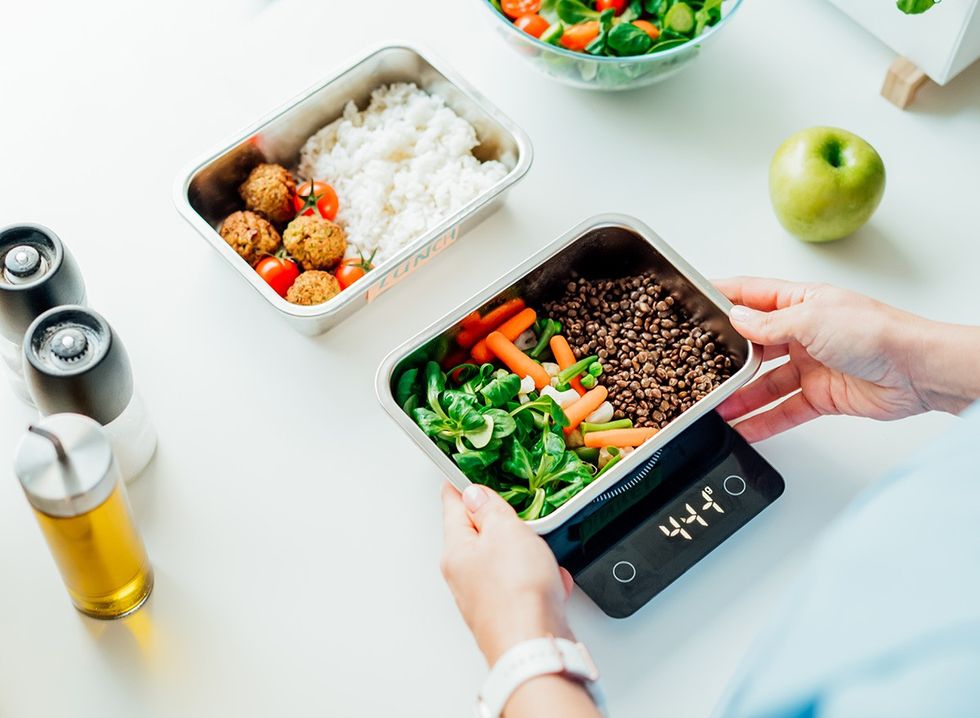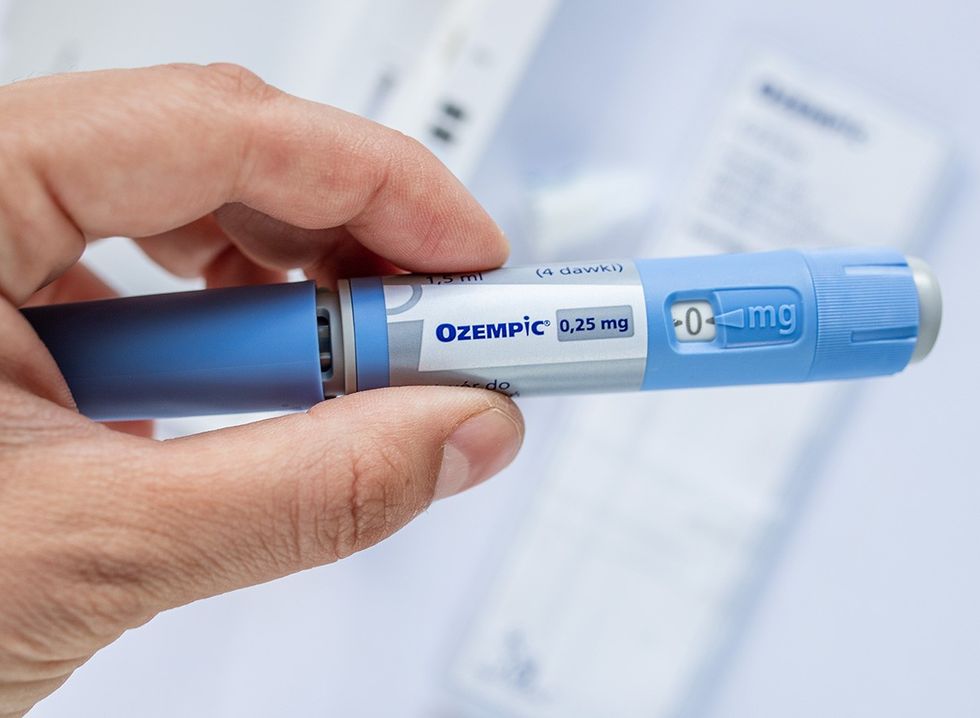Hidden fat, or visceral fat, is excess weight stored in the belly that's wrapped around organs like the liver and intestines. Hidden fat can increase the risk for health conditions such as heart disease, fertility problems, cancer, liver disease, type 2 diabetes and more. There are several causes of hidden fat including diet and inactive lifestyles, but there's other key factors that contribute as well. Body Network talked to experts who reveal causes of hidden fat.
Ultra-Processed Foods

Many processed foods taste delicious and may not seem that bad for you, but according to Kaley Birge, a Registered Dietitian Nutritionist and Certified Personal Trainer with CurveFit Academy, they can cause hidden fat. "Weight loss has often been explained as a simple equation — calories in versus calories out. However in practice, it isn’t as simple as it sounds. From our sedentary jobs, to the advertisements all around us, to food manufacturers designing food products to trick our brain’s psychology, we can be easily fooled out of a calorie deficit. It’s important to be aware of the less obvious causes of hidden calories so our fat loss efforts don’t go to waste. Keep an eye out for these common causes of fat gain that are hidden in our day-to-day lives.
Ultra-processed foods are specifically engineered to be irresistible, making it hard to stop eating them. Some features of these foods include added sugar, salt, and fat. They are also usually stripped of the naturally-occurring fiber and water that whole foods have that are helpful for healthy weight management. Instead, try incorporating more whole foods in your diet such as whole grains, fruits and vegetables, and lean protein sources including beans, legumes, meat and dairy. These foods will help you feel fuller sooner and longer and naturally decrease fat accumulation from overconsumption."
Added Sugar in Food and Drink

Birge says, "Added sugar in baked goods, cereals, flavored yogurts, and many beverages often contributes excess calories in our diets. Sugar sweetened beverages such as sodas and sweet teas have also been tied to increased visceral fat around the stomach area. They also provide a sugar high followed by a sugar crash, making you crave calories soon after consuming them. Instead of sugary beverages, try flavored waters, sparkling waters, unsweet tea, or zero sugar sodas."
RELATED: 6 Tips for Simple Meal Planning From a Coach
Alcohol

According to Birge, "Alcohol has many avenues that can lead to hidden fat accumulation, such as increased appetite and decreased judgement sensations, increasing the hormone cortisol, and causing poor sleep quality. These can all lead to increased fat storage. The Centers for Disease Control and Prevention recommends that women have no more than one drink per day and men not have more than two. When you are going to drink, limit your drink consumption to the CDC guidelines, and pair the beverage with a balanced meal and glass of water."
Not Enough Protein

Having enough protein in your diet is important for several reasons, including cutting down on hidden fat. Birge says, "Research has correlated higher protein diets to decreased likelihood of having excess belly fat. Getting enough protein helps balance your weight by increasing fullness, slowing digestive times, and contributing to a higher resting metabolic rate. Try to incorporate more protein in your diet by making sure you have a protein food at each meal. This can be lean meat, eggs, lentils, beans, or a protein supplement such as a protein shake or bar."
Always Read the Ingredients List

It's important to know what you're eating and putting into your body. Jordan Trinagel a Licensed Occupational therapist and online health coach says, "Hidden fats can come in various forms especially when they are called something else. For example, an ingredient found in bread and crackers called DATEM (diacetyl tartaric acid esters of monoglycerides) which is a conditioner that comes from canola and soybean oil may not be obvious, even if you are reading the ingredient list. Make sure you read the ingredient list, don't just get distracted by 'no trans fat' or other selling phrases on the front. Always check the back of any food item to find hidden oils or ingredients that could disguise themselves leading you to eat hidden fats you didn't even realize."
RELATED: I Lost 40 Pounds by Tracking My Macros, Here’s How You Can Do It Yourself
Healthy Fats

Trinagel says, "By now we all know about ‘healthy fats’ but sometimes too much of a good thing is not so good. While it is important to include healthy fats such as avocado, dairy, nuts, and unprocessed oils in your diet, if you aren’t keeping track of how much you ingest, it could be a source of hidden fat in your diet."
Lifestyle Changes

If you've stopped working out or staying active, that could be a cause of hidden fat. Jake Jackson, a certified level two Crossfit Coach says, "Most people wrongly assume that gaining body fat is a result of the aging processes. They often blame their metabolism for slowing down, when this isn't the case for most healthy people. Your metabolism remains relatively stable throughout most of your adult life. It's your lifestyle that changes. This lifestyle change is the primary cause of hidden fat. The vast majority of the food you eat is converted into energy to keep your body running. This is your basal metabolic rate. The next largest chunk of energy expenditure is your physical activity, both from exercise and simply moving around, carrying your kids, and doing household chores, etc. As people age, they tend to burn less energy from physical activity. If you simply maintain your eating habits from when you were younger, and burn less energy, you will gain body fat."
RELATED: I’m a Running Coach And This is How I Would Start My Running From Scratch
"Small Changes ...Can Yield Large Results"

Jackson explains, "I always recommend that my athletes make dietary changes first, and then add in some form of exercise they like. Gradual changes are easier to stomach, and the easiest change is to cut out one piece of junk food a day. Don't eat that second cookie, or have an extra helping of macaroni. Give yourself easy wins, that you can accomplish by cleaning up your diet. Next you should add in some easy exercise, as research shows that steady state cardio is just as good as very intense interval training for fat loss purposes. Small changes done with consistency can yield large results."
💪🔥Body Booster: Instead of sugary beverages, try flavored waters, sparkling waters, unsweet tea, or zero sugar sodas. And if you enjoyed this article, take advantage of these 15 Quick Ways to Lose Body Fat Percentage in a Week.



















 I'm a Nutritionist and These 9 High-Protein Snacks Keep My Clients Full While Losing 50 Pounds
I'm a Nutritionist and These 9 High-Protein Snacks Keep My Clients Full While Losing 50 Pounds
 Shutterstock
Shutterstock 2. Processed FoodsShutterstock
2. Processed FoodsShutterstock Shutterstock
Shutterstock Shutterstock/Prostock-studio
Shutterstock/Prostock-studio Shutterstock
Shutterstock Pro TipsShutterstock
Pro TipsShutterstock Shutterstock
Shutterstock Shutterstock
Shutterstock Shutterstock
Shutterstock Shutterstock
Shutterstock Don’t Drink as Much AlcoholShutterstock
Don’t Drink as Much AlcoholShutterstock Most Women on GLP-1s Are Making a Few Common MistakesShutterstock
Most Women on GLP-1s Are Making a Few Common MistakesShutterstock Soda and Sugary DrinksShutterstock
Soda and Sugary DrinksShutterstock Shutterstock
Shutterstock Eat BreakfastShutterstock
Eat BreakfastShutterstock And Improve Insulin SensitivityShutterstock
And Improve Insulin SensitivityShutterstock Belly Flab Strip Tip: Sugar and Fat Calories Leave Its Mark on Your BodyShutterstock
Belly Flab Strip Tip: Sugar and Fat Calories Leave Its Mark on Your BodyShutterstock Shutterstock
Shutterstock The Drugs Mimic the GLP-1 Hormone Naturally Produced by the BodyShutterstock
The Drugs Mimic the GLP-1 Hormone Naturally Produced by the BodyShutterstock 3. Deep-Fried ItemsShutterstock
3. Deep-Fried ItemsShutterstock